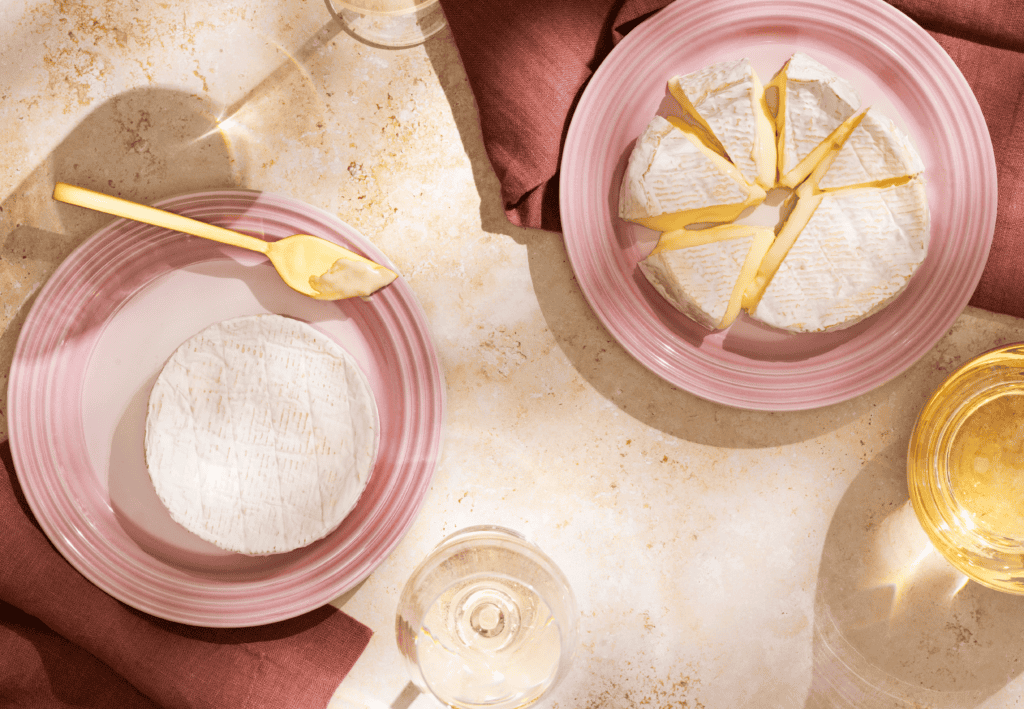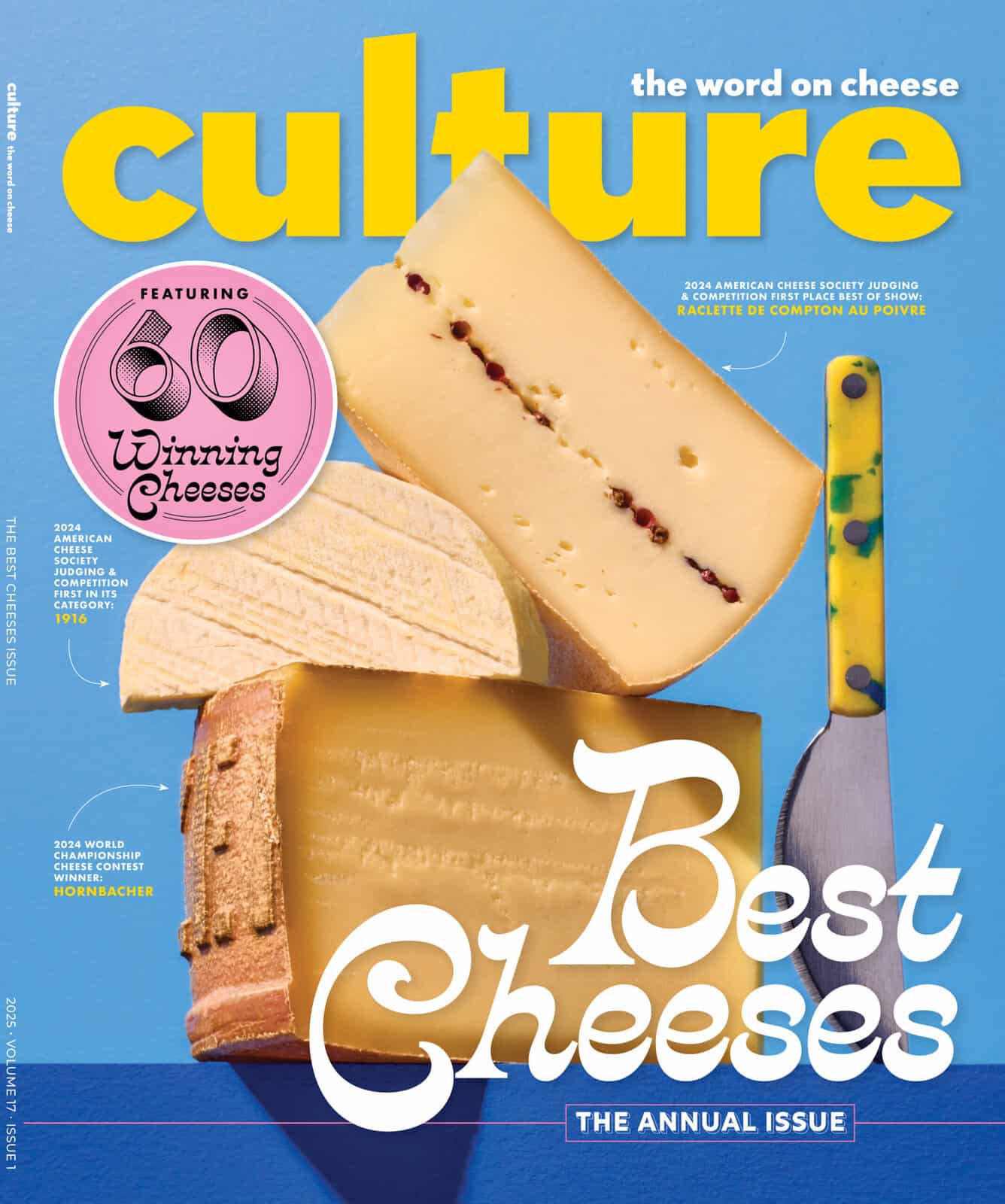
From the world of luxury shoes in New York City to the rolling hills of Litchfield, Connecticut, two businessmen turned their attention from heels to heifers when they purchased a historic farm in the rural countryside. In 1999, the late George Malkemus and Anthony Yurgaitis, famous for putting Manolo Blahnik stilettos on the map, acquired what is now known as Arethusa Farm with preservation in mind. Initially, their foray into farming was focused on show cows, but over time, their passion for high-quality milk led them to build a dairy plant in 2009. By 2011, with the expertise of plant manager and head cheesemaker Chris Casiello, Arethusa began crafting its own cheeses.
“From the start, [Arethusa’s] model was to create a wide variety of products,” explains Casiello. “We didn’t want to focus on just one product that we would have to sell nationally. We wanted to be a local farmstead dairy that you could get your milk, butter, yogurt, and sour cream from.” This ethos has guided Arethusa from the beginning, emphasizing community and quality over scale.
Among Arethusa’s standout offerings is Karlie’s Gratitude, a camembert-style cheese that has earned multiple accolades, including First in its category at the 2024 American Cheese Society Judging and Competition. Named after Karlie, the beloved Jersey cow whose success in the show ring ignited her owners’ desire to showcase her quality milk in cheese form, Karlie’s Gratitude celebrates the richness of Connecticut’s terroir.
Casiello developed the recipe for this cheese 25 years ago while working at a different Connecticut dairy. Over the years, he and his team of cheesemakers perfected the recipe to the point where the cheese “steers itself,” he says. “I mean, we had to work hard to get the initial process right—there is no stirring or cook stage to a camembert. It’s just cultured and rennetted and then cut and hooped. So the draining phase is super critical, and you have to get that consistency of the curd just right. You only get one chance at it. You fill the molds and you’re done.”
After the cheese is molded, it ripens for 10 days at an elevated temperature, allowing the Geotrichum candidum and Penicillium camemberti molds to bloom and form a fluffy white rind. Then, the cheese is wrapped and aged for another week before it’s ready for consumption. The result is a soft, oozing texture—the hallmark of a traditional camembert—with flavors of cooked cream, mushroom, and buttery notes that intensify with age.
When enjoying Karlie’s Gratitude, Casiello opts for simple pairings that contrast with the cheese’s creamy paste, like a crusty baguette or a crisp glass of sparkling wine. For him, it’s all about letting the milk shine. “We really wanted to showcase what we could do with Connecticut milk, and I think we have achieved that.”



